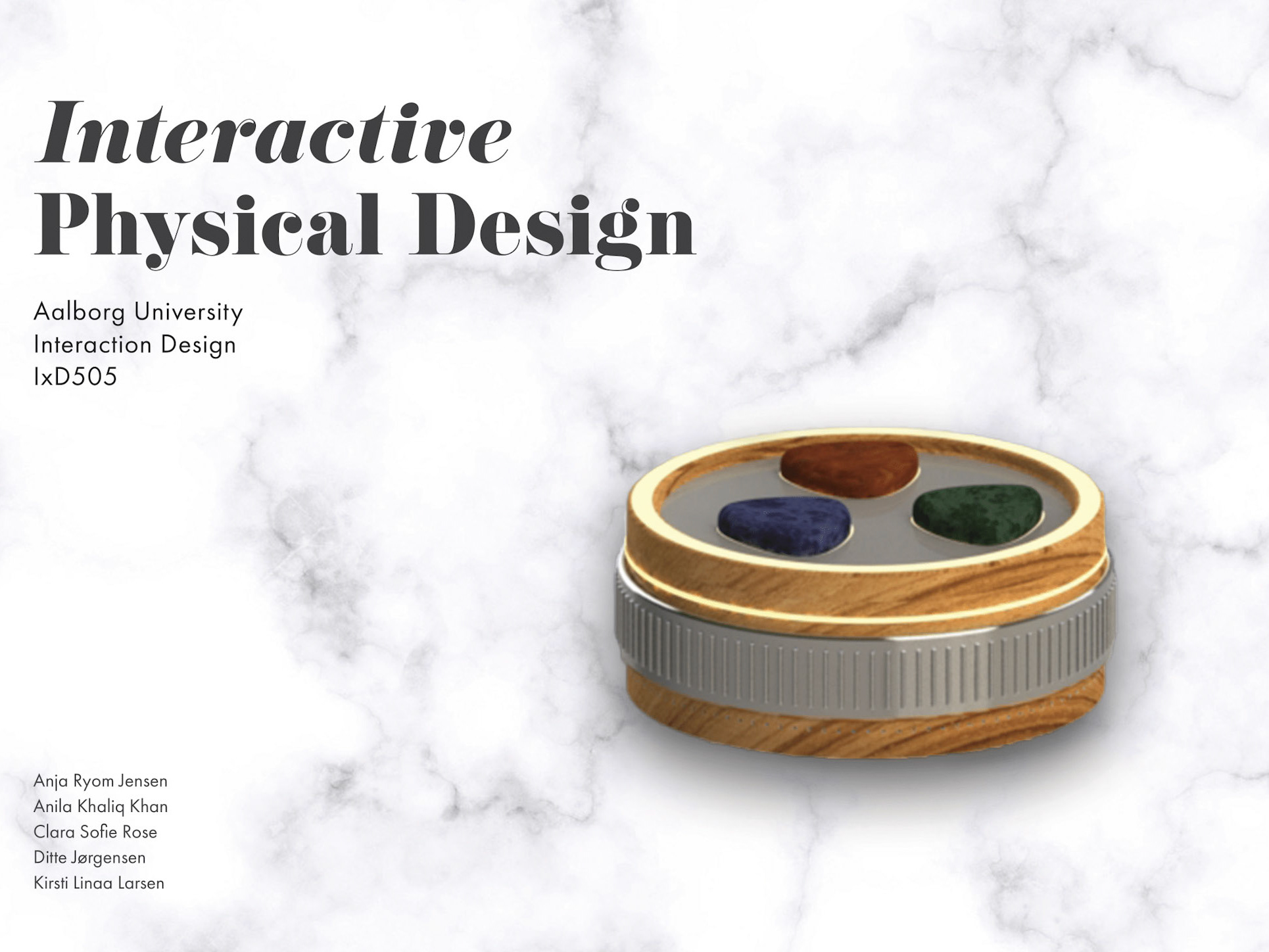The purpose of this study was to create spontaneous online interactions and a sense of togetherness in a friend
group of six friends during the COVID-19 Pandemic, where social interactions have mostly been moved
to online environments.
group of six friends during the COVID-19 Pandemic, where social interactions have mostly been moved
to online environments.
The approach of this study has been research through design, using an exploratory
prototype to investigate how to initiate a conversation through an ambient display.
prototype to investigate how to initiate a conversation through an ambient display.
The deployment period lasted for one month, and data was gathered through interviews, diaries and data logging of the prototype.
The exploratory prototype, Connection Crystals, created more online interactions in the friend group and created
a shift in who initiated the interactions. Furthermore, the online interactions created using the prototype were
mainly voice communication, whereas they would usually use text before the deployment.
a shift in who initiated the interactions. Furthermore, the online interactions created using the prototype were
mainly voice communication, whereas they would usually use text before the deployment.
The prototype helped people who self-identified as shy and introverted to initiate spontaneous online interactions. The participants perceived the prototype as not disruptive as it operated sufficiently in the background during working hours.
Storyboard
Result
The result of the study showed that the friend group had more interactions than before the deployment period. Furthermore, the responsibility of initiating contact was distributed to multiple people, which created a change in the dynamic. The participants stated that they talked more to different friends in the group than they usually did due to the prototype. Several participants found the prototype to be a good icebreaker and a reason to initiate
contact, which they were missing before the deployment.
contact, which they were missing before the deployment.
The prototypes created a sense of togetherness across the friend group by reminding them of each other. When using the prototype, the participants felt more sure about when they could contact their friends and perceived that they did not waste time by waiting for text responses.
The lights did not disturb or irritate but worked as an ambient solution, which all participants placed on their work
desks. We found that the prototype made it effortless to initiate interactions, especially for shy and introverted people, as it
eliminated some of the concerns.
desks. We found that the prototype made it effortless to initiate interactions, especially for shy and introverted people, as it
eliminated some of the concerns.





